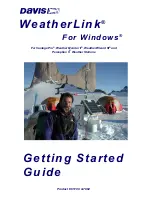
32
This document is written and published by ShockWatch, Inc. All rights reserved.
USER MANUAL
If any accelerometer activity exceeds the wake-up threshold, the ShockLog will start recording accelerometer
data at a faster rate. The ShockLog takes 0.25 msec to start recording higher resolution data once the wake-up
threshold has been exceeded. If the activity does not exceed the warning level and drops below the wake-up
threshold, the ShockLog will go back to monitoring time slot peaks. An event will not be recorded.
When the wake-up threshold and the warning levels have been breached, the ShockLog will record a detailed
event and flag it as a warning. The same logic is applied when the alarm threshold level is breached. The ShockLog
will record a detailed event and flag it as an alarm.
Once the event activity has dropped below the drop out threshold (or reached the maximum allowed event length),
the ShockLog will stop the dynamic event recording and go back to monitoring peak values during time slots.
“Wake”
The level at which the ShockLog will wake up and begin recording. The wake-up threshold should be set to
approximately 80% of the warning level.
“Warn and Alarm”
Warning and alarm events are recorded in exactly the same way. The thresholds distinguish how the events are
flagged in the ShockLog data file and how the LEDs on the ShockLog unit flash once a threshold has been breached.
“Drop out”
The acceleration level at which the ShockLog will stop recording an event provided it has been set to record for
longer than 1 second and the “Always Max” box has not been selected. The drop out level should be no lower than
the wake-up threshold and can be as high as the warning.
If you are unsure of how to set your thresholds, please contact SpotSee Technical Support for assistance.
TIP:
It is not advisable to use wake up or drop out thresholds of less than 10%. However, it is possible to set
levels down to 5% if necessary.
TIP:
Warning and alarm thresholds become more important when the ShockLog LEDs are to be used as part
of a shipment’s receiving audit. Example: Set a warning level to indicate the shipment should be quarantined
pending further investigation. Set the alarm threshold to indicate the shipment must be inspected without delay.
















































